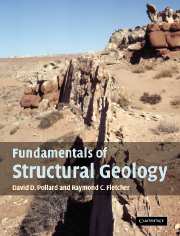Chapter 12 - Model development and methodology
Summary
Oblique aerial photograph of the eastern slope of Mt. Hillers in the Henry Mountains, Utah. The Black Mesa laccolith and Maiden Creek sill form the black, cliff-forming outcrops.
Three main approaches are needed to unscramble a complicated system. (1) One can take it apart and characterize all the isolated bits – what they are made of and how they work. (2) Then one can find exactly where each part is located in the system in relation to all the other parts and how they interact with each other. These two approaches are unlikely, by themselves, to reveal exactly how the system works. (3) To do this one must also study the behavior of the system and its components while interfering very delicately with its various parts, to see what effect such alterations have on behavior at all levels (Crick, 1988).
Nature, or what we might call natural reality, can appear to our senses as a very complicated system when we view geological structures in outcrop. Francis Crick (1988) also faced a complicated system when viewing the constituents of living cells. He suggests in his book What Mad Pursuit that one should first characterize all the parts of the system and then understand their geometric relationships. This is what we attempt to do as structural geologists when mapping structures in the field.
- Type
- Chapter
- Information
- Fundamentals of Structural Geology , pp. 456 - 477Publisher: Cambridge University PressPrint publication year: 2005



